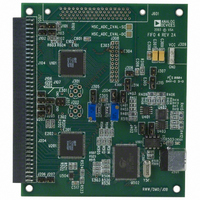HSC-ADC-EVALA-DC Analog Devices Inc, HSC-ADC-EVALA-DC Datasheet - Page 15

HSC-ADC-EVALA-DC
Manufacturer Part Number
HSC-ADC-EVALA-DC
Description
KIT EVAL FOR DUAL ADC/CONV
Manufacturer
Analog Devices Inc
Specifications of HSC-ADC-EVALA-DC
Lead Free Status / RoHS Status
Contains lead / RoHS non-compliant
File
New—Opens a blank canvas used for building a new
component diagram.
Open—Loads an existing canvas using a standard file browser.
Close—Shuts down the current canvas. If you have changed the
canvas since the last save, the program asks if you wish to save
before closing.
Save—Saves the current canvas under the existing canvas file
name. If the canvas does not already have a name, the software
prompts for one before the save.
Save As—Saves the current template under a new name.
Recent Files—Displays a list of the last five canvas files opened
or saved.
Exit—Exits VisualAnalog.
Edit
Undo—Reverses up to the last five actions, including deletion,
parameter changes, component placement, and connectivity.
Redo—Performs the last undone action again.
Cut—Copies the selected objects to the clipboard and then
deletes them from the canvas.
Copy—Copies the selected objects to the clipboard.
Paste—Places the items from the clipboard on the canvas.
Select All—Selects all items on the canvas.
Delete—Removes all currently selected items from the canvas.
View
Components—Displays the Components Tool form if it is not
visible.
Canvas
Update—Runs the currently selected canvases by executing the
component flow on each canvas.
Continuous Update—Causes the selected canvases to run
continuously. When started, the Continuous Update menu
item changes to Stop Update. Selecting this stops all processing.
You can also automatically stop continuous update by using the
Stop Component. See information on the Stop Component for
more details.
Properties—Displays editable properties for the currently
activated canvas (the canvas focused for editing).
Figure 30. Menu Bar
Rev. 0 | Page 15 of 40
Tools
External Tools—Displays a form with which the user can
select external programs that VisualAnalog can open. Adding
an executable item with this form places a new menu item
underneath the Tools menu.
Options—Opens the VisualAnalog options form.
Window
Tile Horizontally—Tiles the canvases in a horizontal direction.
Tile Vertically—Tiles the canvases in a vertical direction.
Cascade—Cascades the canvases.
Canvas Selection—Provides a list of open canvases. From this
list, the user can select a canvas for editing.
Help
User Manual—Opens this user manual with the associated PDF
viewer.
About VisualAnalog—Displays the VisualAnalog version
number and other information.
USING THE TOOL BAR
The tool bar provides quick access to common features that are
available on the menu bar.
New Canvas—Opens a blank canvas used for building a new
component diagram.
File Open—Loads an existing canvas using a standard file
browser.
File Save—Saves the current canvas under the existing canvas
file name. If the canvas does not already have a name, the soft-
ware prompts for one before the save.
Update—Runs the currently selected canvases, by executing the
component flow on each canvas.
Figure 31. New Canvas Button
Figure 32. File Open Button
Figure 33. File Save Button
Figure 34. Update Button
AN-905

















